
Hello friends. During our trip to Bari we coincidentally encountered an open house event. We had the chance to visit the Palazzo del Governo, enter the building and see how the Prefecture operates, which offices are there and in what kind of environment they make decisions. In fact anyone, even children can enter this building. School children, whether in primary or middle school, often visit here as part of school trips. Since I didn’t attend school here, I never had such an experience, so I wanted to take advantage of the open house day. Open house days are when buildings, palaces, or monasteries, usually closed to the public, open their doors to visitors. My friend and I decided to seize this opportunity.








First we took a short walk around Piazza Libertà. Here you can see the Teatro Comunale Niccolò Piccinni and Corso Vittorio Emanuele Street. There is paid parking available and we parked our car here. Then we arrived in front of the Palazzo del Governo. In front of every window there were flags with "FAI" and "Fondo per l'Ambiente Italiano" written on them. As part of these open house days this fund opens some places to visitors.


Palazzo del Governo is a government building that existed in Bari before any other public or private palaces. At that time this area didn't exist yet. The old city of Bari was still surrounded by a moat and hidden behind walls. This building was once a Dominican monastery. Later it became an intendant palace, then a prefecture palace and eventually a government palace. Over the centuries this building has changed names and functions multiple times. You can't just enter it freely, but you can visit it with a tour. For example, children coming with their classmates, people visiting during open house days or those with an appointment with the prefect can enter.


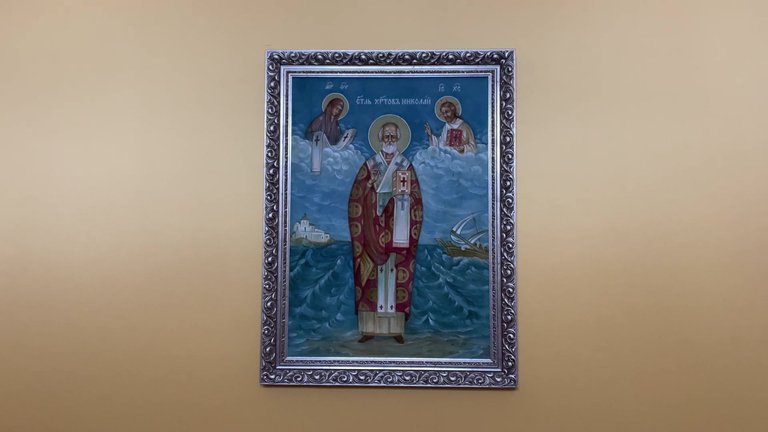



During the tour we each paid 3 euros, which was a voluntary donation to the fund. In return we were given a small bottle of water and were guided through some of the palace's rooms. Unfortunately we couldn't access every room; some rooms were closed to tours. And some rooms were only accessible to those with a FAI card. You can get a one-year subscription to this fund in Italy and if we had had this subscription, we could have seen more rooms and apartments compared to regular visitors. If I had known this in advance, I would have honestly gotten the subscription, as it would have allowed me to see Aldo Moro's rooms and the government offices.
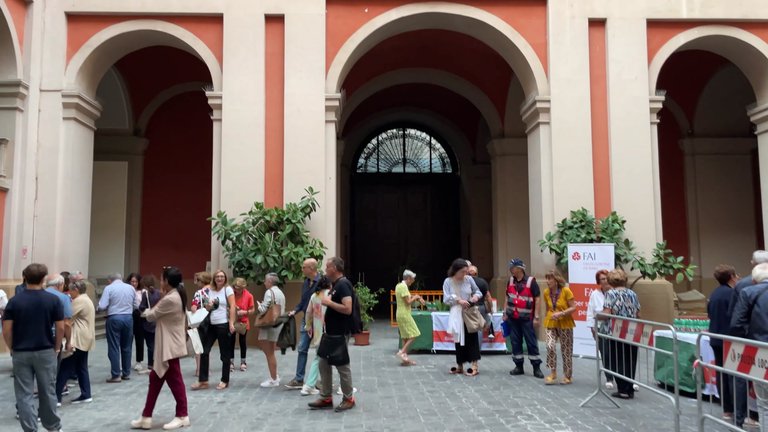
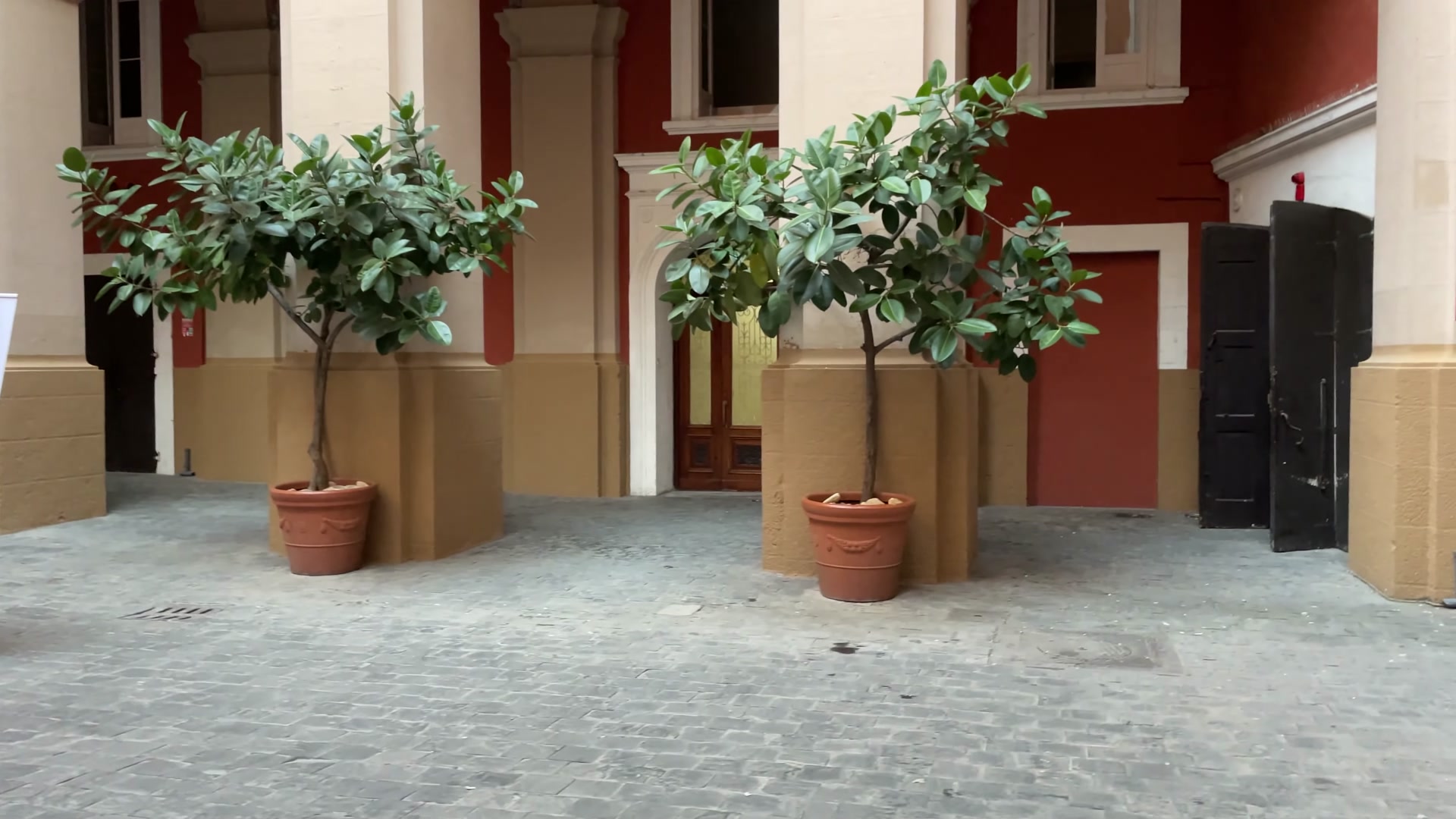
If you're in Italy and interested in history and culture, getting such a subscription might be worthwhile. The Palazzo del Governo is the largest and most magnificent administrative building in Bari, standing out with its impressive burgundy and white facade. The building was reconstructed between 1815-1830 from an old women's monastery. Elegant and luxurious rooms have been preserved here and some monastic details still remain. In old times there were secret passageways here so that some famous people could attend services held in the neighboring San Domenico Church.

This building is connected to the San Domenico Church by a wall and during the monastic era, this secret passage was made for the sisters who couldn’t attend the services. They could listen to the services from this passageway and the balconies. This area is currently used by the prefect, who sometimes watches the services from this balcony.


The inner courtyard of the Palazzo is currently used as a parking area and is surrounded by arches leading to various compartments. You can ascend via a monumental white staircase guarded by two lion statues. The stairs are surrounded by a Renaissance-style railing, leading you to the second floor. The volunteer students who guided us during the tour provided very interesting information and we thank them.



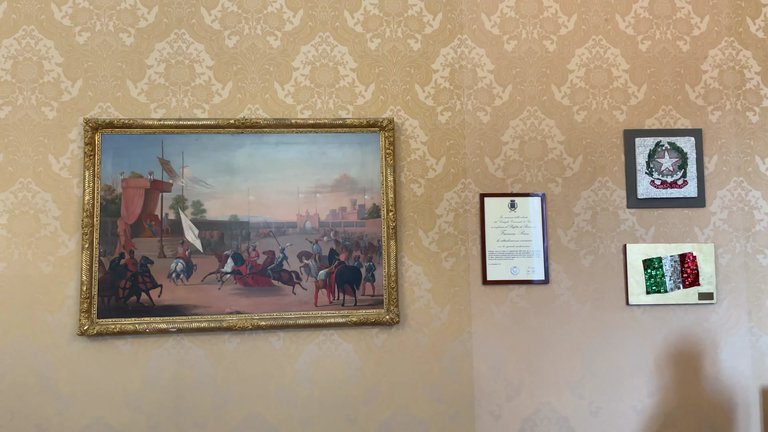
Here is the "Ufficio del Prefetto" the office where the prefect works. As you can see meetings are probably held here and the bells of the neighboring San Domenico Church can be heard. We saw this church for the first time from the secret passage.



I learned during this visit that the city has a new prefect Francesco Russo. The previous prefect has retired. Some of the rooms we visited are used for meetings and sessions. Important guests, such as ministers, would stay in an apartment here. Important guests still stay in a section of this building when they visit Bari. And there are small fountains on each floor from the old monastery period. The others are closed.



The building is quite interesting and admired. The most impressive area is the ceremonial hall considered the heart of the palace, where significant guests are hosted. This hall is used for various state events, weddings and other official ceremonies. Important weddings and baptisms have been held here. The hall is adorned with gold and decorated with military symbols. Since it is also used for balls and dinners, it is decorated with two large mirrors. The mirrors reflect the light from the large chandeliers, increasing the hall’s brightness.

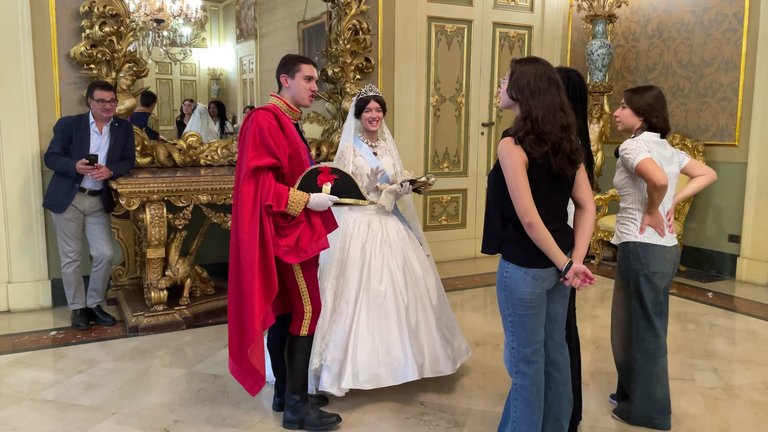


I loved the Baroque and Rococo style, with plenty of gold and embellishments. I really didn’t expect such an impressive place, especially finding such beauty in a small Southern Italian town instead of larger cities like Rome or Florence is quite fascinating. The presence of young people dressed in royal attire enhanced the impressiveness of the ceremonial hall. Everyone wanted to take pictures with them, which made the hall look like a royal fairy tale.
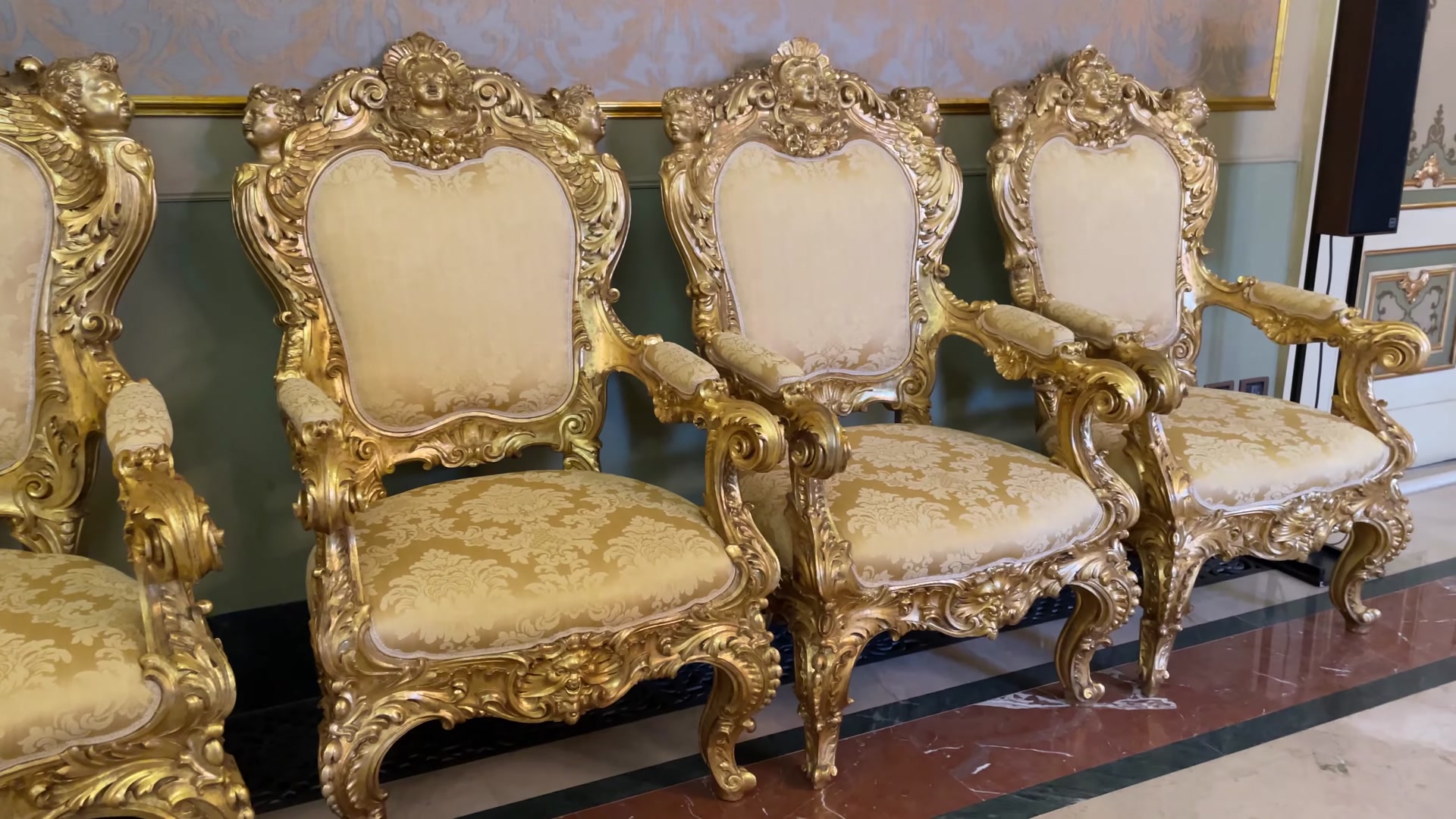

I thank the young students for this beautiful experience. The moments spent in the hall made me feel like I was in a royal fairy tale. Every corner of the hall is covered in gold and very magnificent. Even though such an environment is not fashionable today, living in such a place would make my soul happy. Over time the appearance of the hall has changed and there are significant differences between its old monastery period and its current state. Nevertheless every detail of the hall is very impressive and beautiful.


By the way I was very impressed by the ceilings in the Caserta Palace. Here there are really magnificent ceilings in some places, but simpler in others. The ceremonial hall has a beautiful ceiling.



Here is the view of Teatro Pecci. You can see Corso Vittorio Emanuele and Piazza Libertà.


In the old days tea was served here, with another room dedicated to tea preparation and this was where it was consumed.


Mirrors, objects, chandeliers and lion statues at the door from the 1800s are truly impressive. The lions have different expressions; one is sleeping and the other is yawning.

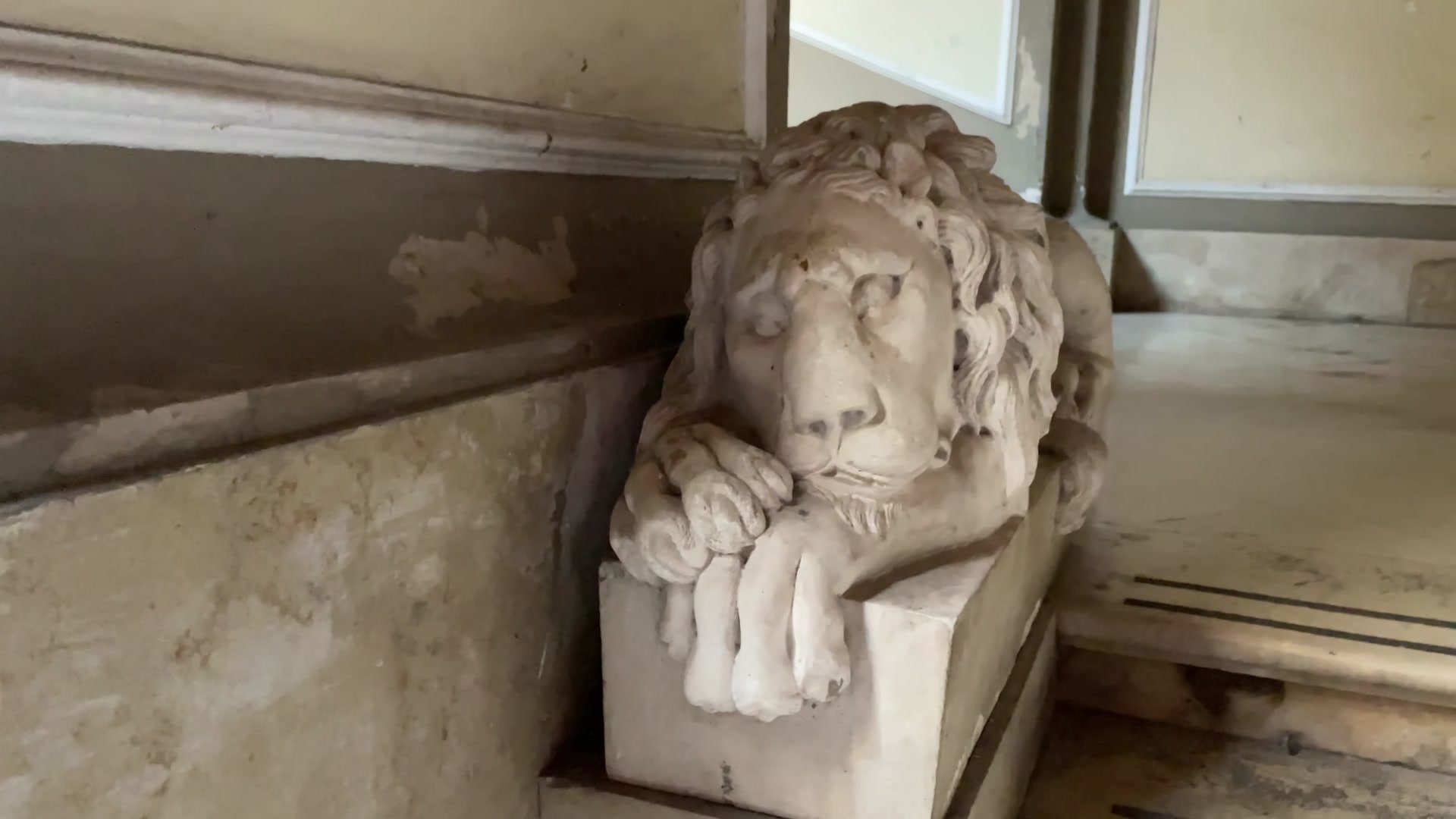
We did a partial review here. We each paid just 3 euros, which is considered a voluntary donation. Those who wanted to see more could access some special areas, such as the prefect's office, but this required an FAI card. If you want to get this card, you can obtain it on-site for 29 euros. I don’t know if this is a one-time fee or an annual subscription.

Then we went to Teatro Pecci and completed our tour. It was really interesting. I took a photo from one of these windows. We learned about the history of Palazzo del Governo and discovered that the monastery was located outside the old city of Bari, beyond the walls. We also saw the San Domenico Church. From here we had the opportunity to look at some secret windows of the church.

These windows were made for the nuns in the Dominican monastery to observe the services. Later after the monastery closed, the prefect began watching services from these windows. Today we looked at these windows, but the church was closed. After the tour my friend and I went into the church. we found it open by chance. I hadn’t seen such a church in Bari before. The gold embellishments show that this is a prefecture church.






For lunch we went to a restaurant called La Cantina dello Zio. I heard about this place from tourists. We tried the mushroom soup. Finding soup in Bari can be difficult. They also brought us a local rosé wine, a mix of Malvasia and Lambrusco. First the mushroom soup arrived. The soup was excellent. The chef also brought a bread called Pane di Altamura. This local bread has a very hard crust and a soft interior. Made from hard grain, it’s very tasty.





We tried fresh herb pasta, seafood salad and grilled octopus. The octopus was really delicious. These are my memories from the Bari trip. I hope you enjoyed it. See you on my next trip.




